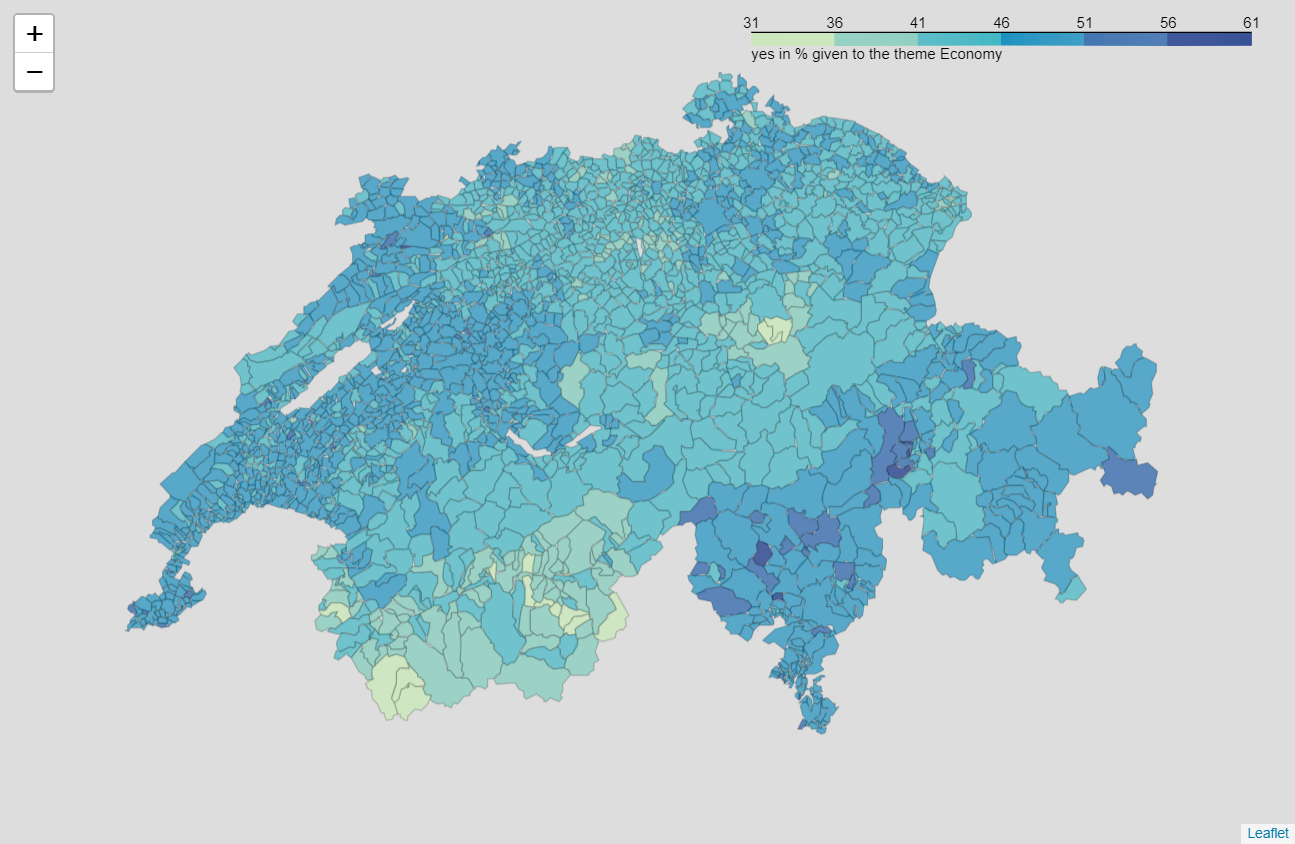Röstigraben Applied data analysis of swiss votation patterns
Theme
The third thing we have done with our voting data is split it by themes. This required some manual work as the official databases only tell us how many times each theme was voted on in a given year. We had to manually deduce which votation was registered as which theme from that, which was easy to do most of the times. There might be one or two cases where two votations were swapped due to some votations fitting two themes at the same time, but we are confident that this represents a negligible amount of cases.
One thing that is out of the question is to label with tags such as “liberal” or “conservative”. This is not only extremely subjective, but also completely oblivious of the high dimensionality of political opinions. A “silly” way to work on this data would be to show who approves the most votations on a certain theme. That could indeed show us similarities between regions.
There is one problem to this approach however: a yes in a given category does not always mean the same thing. If we imagine two votations, one favorable to immigration, the other against it, and take two communities with opposite views on the matter, both communities will have voted “Yes” and “No” once when we aggregate this data, and will thus appear similar on the map, even though their opinions on the matter diverge. The most we can observe in the previous maps is a certain level of confidence that:
- When two communities have very different colors, then these two communities have probably different views on subjects of a certain theme.
- When two communities both vote either often “Yes” or often “No” on the subject, wthen they probably have similar opinions on the subjects.
Anything inbetween like the case described higher will disappear in this visualization, because we are still discarding a lot of valuable information. This is why we will resort to clustering in order to get the valuable information this data has for us.
Hello World!
Analysis and discussion
One tendancy is clear by looking at this data: rural, mountainous and traditional parts of the country are clearly more in favor of a political status quo, with clearly more refusal of votations than the rest of Switzerland. It correlates with the idea that rural areas are generally more conservative than urban areas, where populations are younger and have a higher level of education, but also different views of the world.
